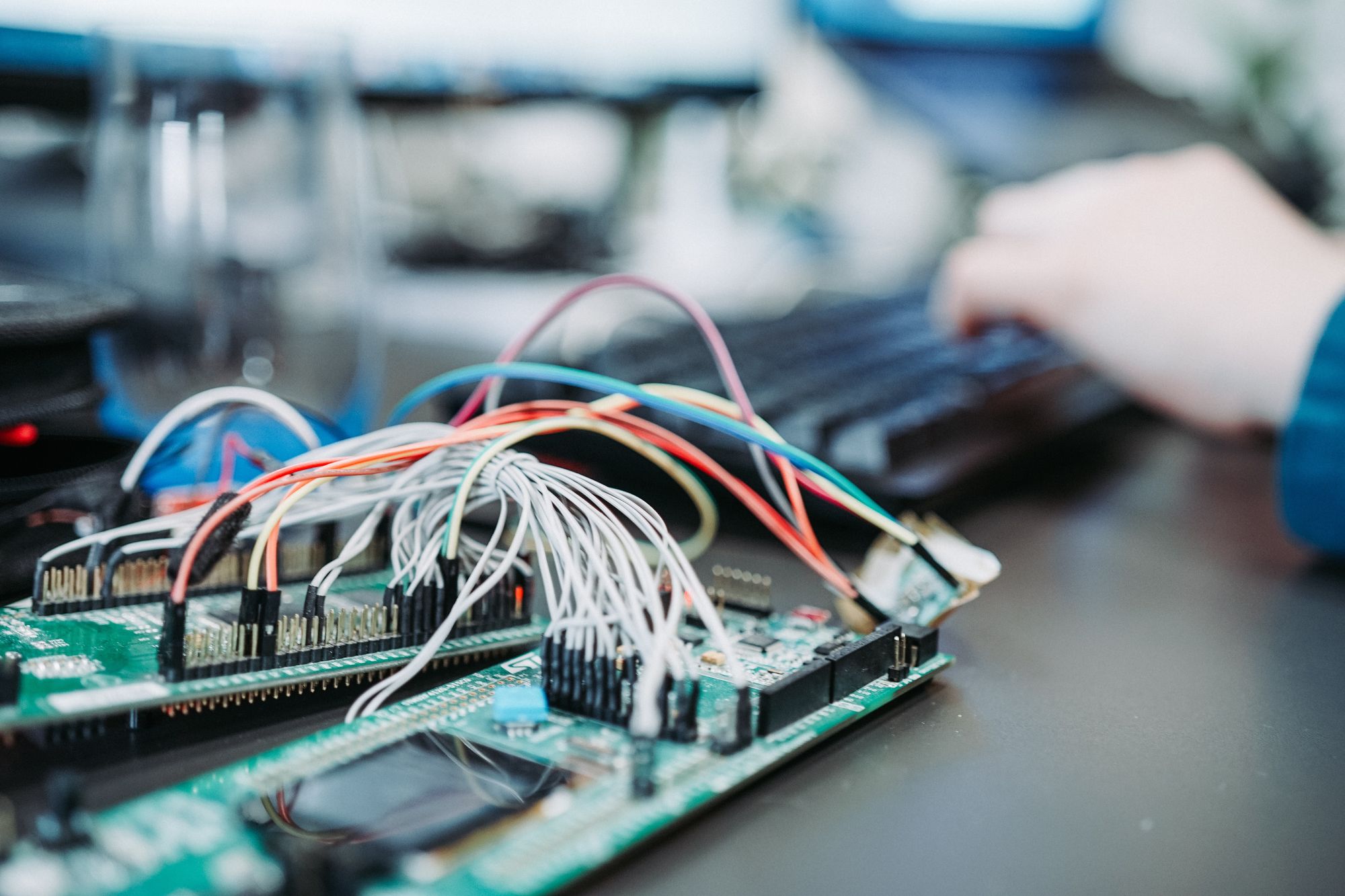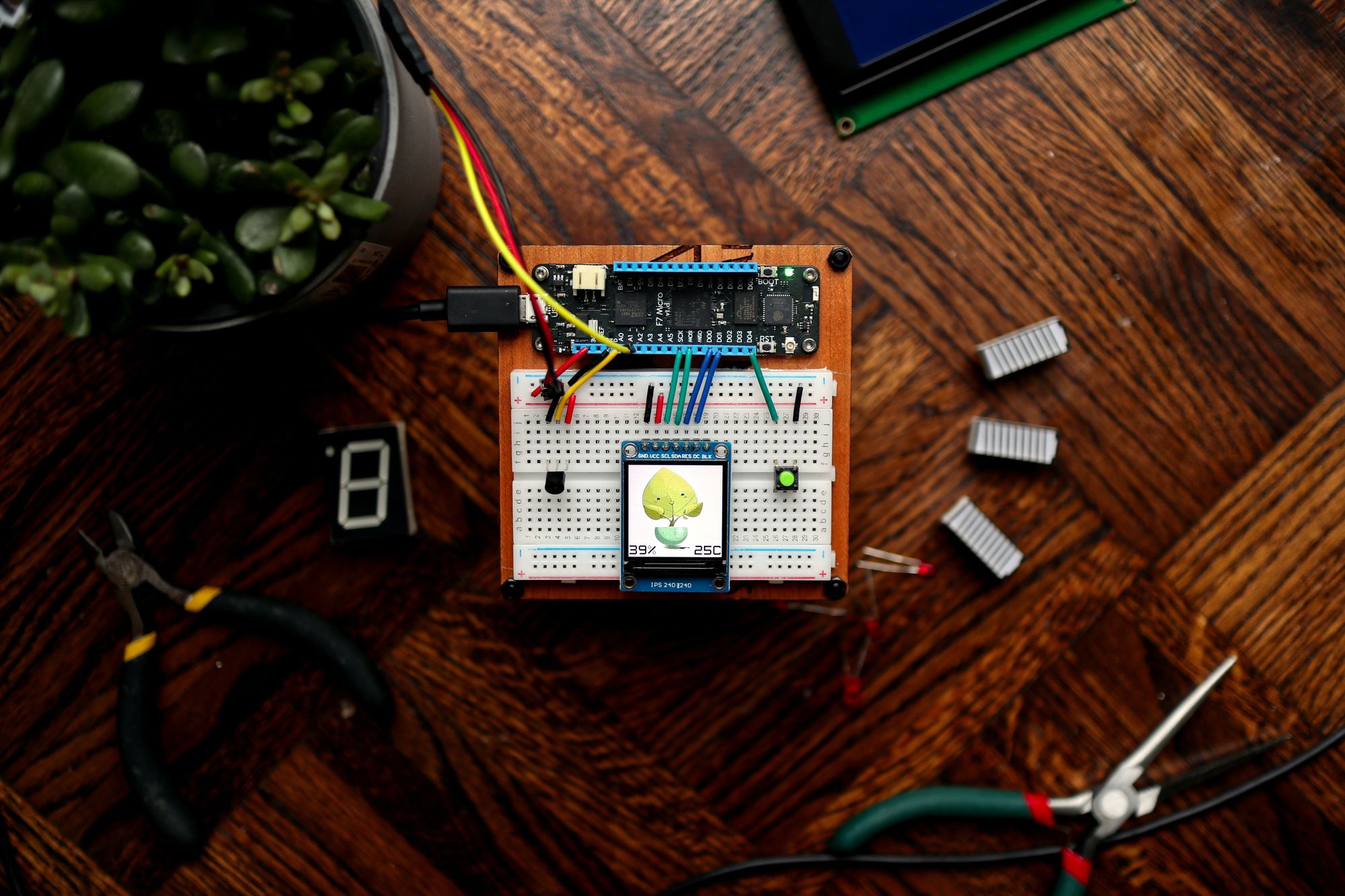As per Statista 2021, the global IoT market is expected to reach $1.5 trillion by 2026, while by 2025, the number of IoT devices is estimated to reach 75 billion.
In fact, as per MarketsandMarkets, 2021, the IoT in the manufacturing industry is projected to grow to $158 billion by 2023. Additionally, as per Grand View Research, 2021, the smart home market is expected to reach $53 billion by 2023.
According to GSMA Intelligence, by 2025, there will be over 25 billion IoT connections, while as per Business Insider’s predictions, there will be 41 billion IoT devices by 2027. Lastly, as per studies by PwC, companies expect IoT and other digital technologies to improve their efficiency by 12%.

As highlighted by these statistics, IoT, or the Internet of Things, has become not only a major economic driver worldwide but also an integral technological revolution for most industries.
While comparatively, IoT is a new term and concept applied to devices that work together in an interconnected way to gather information, often to better automate processes, and to create a more cohesive and informed user experience.
IoT thus leads to improved operational metrics of businesses, which further results in higher net revenues and net profits, just to name a few advantages of implementing IoT. It is no wonder it has become such an important part of the economy.
However, to help you better understand IoT and why companies need it, this article will cover the following topics:
- What is IoT?
- What are IoT Companies?
- What are the Advantages of IoT in Businesses?
- What are the Disadvantages of IoT in Businesses?
- 6 Reasons Why Companies Need IoT
- FAQs Related to IoT
- How can Deskera Help You with IoT Implementation?
- Key Takeaways
- Related Articles
What is IoT?
IoT stands for Internet of Things, which refers to the interconnected network of physical devices, vehicles, home appliances, and other items embedded with electronics, software, sensors, and connectivity which enables these objects to connect and exchange data.
In IoT, objects can be remotely monitored and controlled through the internet, which makes it possible for them to be accessed from anywhere, at any time. This results in a more efficient and automated world, as IoT devices can automatically perform tasks and make decisions based on real-time data.
This, more often than not, leads to higher revenues, net profit ratio, and also improved cash flow. Additionally, it also keeps your customers satisfied, thus encouraging returning customers.
IoT has the potential to transform various industries such as healthcare, manufacturing, transportation, and more by making systems more efficient, reducing costs, and improving the overall quality of life. In fact, with the implementation of IoT in these industries, their financial KPIs are improved, and their customer retention is improved.
Examples of IoT devices include smart home devices such as smart thermostats, smart locks, and smart lights, wearable devices such as smartwatches, and connected devices in the industrial and commercial sectors such as connected machines and vehicles.
However, the growth of IoT also raises important security and privacy concerns, as the interconnected network of devices creates more opportunities for cyberattacks and data breaches. It is important for IoT devices to have proper security measures in place to protect the data and privacy of users.
What are IoT Companies?
IoT companies are businesses that develop and manufacture products and services related to the Internet of Things (IoT). These companies specialize in creating hardware, software, and services that enable the connected devices, vehicles, and appliances in the IoT network to communicate and exchange data.
Examples of IoT companies include:
- Smart home device manufacturers: Companies such as Amazon (Echo), Google (Nest), and Apple (HomeKit) offer a range of smart home devices, such as smart speakers, thermostats, and security systems, that allow users to control and monitor their homes remotely.
- Industrial IoT companies: Companies such as GE Digital, PTC, and Siemens provide solutions for industrial companies to connect and manage their machinery, equipment, and assets to improve efficiency and performance.
- Wearable technology companies: Companies such as Fitbit and Apple offer wearable technology devices such as smartwatches and fitness trackers that collect and transmit health and fitness data.
- Connected vehicle companies: Companies such as Tesla and Ford are working on connected vehicles that use IoT technology to improve safety, efficiency, and comfort for drivers and passengers.
- IoT platform providers: Companies such as Microsoft (Azure IoT), Amazon (AWS IoT), and Google (Google Cloud IoT) offer cloud-based IoT platforms that allow developers to build, deploy, and manage IoT applications and devices.
IoT companies are playing a significant role in the growth and development of the IoT market, as they provide the technology and solutions that enable the IoT network to function effectively.
These companies continue to innovate and push the boundaries of what is possible with IoT technology, bringing new and exciting products and services to the market.
What are the Advantages of IoT in Businesses?
IoT has the potential to bring significant benefits to businesses across various industries. By collecting and analyzing real-time data from connected devices and machines, companies can improve their efficiency, customer experience, safety, and competitiveness. Thus, there are several advantages of IoT in businesses, including:
Increased Efficiency
IoT devices and sensors can collect real-time data from various processes, allowing companies to make informed decisions and optimize their operations. This leads to increased efficiency as well as a decrease in business expenses, and therefore less pressure on working capital.
Improved Decision-Making
IoT provides companies with access to real-time data from various sources, enabling them to make more informed and accurate decisions. This can lead to better outcomes and improved business performance.
It also helps in having a more accurate master production schedule, as well as safety stock. This in turn will ensure customer satisfaction, and therefore encourage returning customers and higher returns on investment.
Predictive Maintenance
IoT devices can collect data on the performance and usage of machines and equipment, allowing companies to predict when maintenance is needed and reduce downtime. This leads to improved productivity and reduced cost of goods sold and cost of goods manufactured.
Enhanced Customer Experience
IoT devices and sensors can be used to gather data on customer behavior and preferences, enabling companies to provide personalized and proactive customer service. This leads to increased customer loyalty and satisfaction, as well as increased sales referrals.
Remote Monitoring and Control
IoT devices and sensors can be accessed and controlled remotely through the internet, enabling companies to monitor and control their operations from anywhere, at any time.
Increased Automation
IoT devices can be programmed to perform tasks and make decisions automatically, based on real-time data. This led to increased automation and reduced manual labor. This will thus help in keeping a check on your expenses while ensuring that the ratio of your operating income to operating expenses is higher.
Improved Safety
IoT devices and sensors can be used to monitor safety-critical systems and processes, such as industrial machinery and vehicles. This allows companies to identify and address potential safety risks in real-time, improving overall safety and reducing accidents. This will also lead to positive brand awareness.
What are the Disadvantages of IoT in Businesses?
While IoT has the potential to bring significant benefits to businesses, it is important to consider the potential disadvantages and address them proactively to ensure a successful implementation. Thus, some of the disadvantages of IoT in businesses include the following:
Security Risks
IoT devices and systems can be vulnerable to cyber attacks, as they often collect and transmit sensitive data. This can lead to data breaches and unauthorized access to sensitive information.
Privacy Concerns
IoT devices can collect and store large amounts of personal data, which raises concerns about privacy and the potential for misuse of that data.
Complexity
IoT systems can be complex and difficult to manage, requiring specialized skills and resources to maintain and troubleshoot. Its implementation can thus make it difficult to manage workplace stress while making it essential to retain top talents who have the required skills for it.
Interoperability Issues
Different IoT devices and systems may use different communication protocols and standards, making it difficult to integrate them and ensure seamless communication.
Cost
Implementing and maintaining an IoT system can be expensive, as it requires investment in hardware, software, and infrastructure. This can even affect the health of your financial statements.
Reliance on Internet Connectivity
IoT devices rely on a stable and reliable internet connection to function properly. If the connection is lost or disrupted, the devices and systems may not work as intended. This might even affect your production planning and, therefore, your shop floor scheduling as well.
Limited Battery Life
Many IoT devices are battery-powered and may require frequent battery replacements, which can be costly and inconvenient.
6 Reasons Why Companies Need IoT
With the visibility and insights that connected devices provide, businesses can take the appropriate actions at the appropriate times to protect profitability and customer satisfaction.
Small improvements in a company's performance could make the difference between gaining a competitive edge and falling behind the competition.
Here are the top six reasons, in my opinion, why businesses in every sector ought to incorporate IoT into their digital transformation plans:
Increase Visibility Across Siloed Business Functions to Improve Business Maturity
You can start using market awareness and gauging performance within your company thanks to the billions of linked gadgets that are delivering potentially valuable information.
As a result of the evolution of digital business, operating models are changing to rely on visibility and predictive capabilities to derive business value and competitive differentiation.
The integration of these once-isolated functions into end-to-end driven comprehensive architectures marks the beginning of the digital journey. IoT is the technological thread that connects these features.
Drive Innovation with Data Analytics
Companies are being forced to review their current business models and embrace whole new operational models as a result of connected devices and new sources of data streams. IoT removes the barrier between the client and the business.
In fact, using the data provided by connected devices and by cycling that data back into the businesses, your businesses will be able to make informed business decisions that start with service, as well as drive new innovations that meet your consumers’ expectations, as well as help in achieving the objectives laid out in your business plan.
Improve Efficiency with Fleet Monitoring
With IoT implementation, your companies will be able to deliver real-time insights into how your fleet is being operated and interacting with the environment.
By connecting fleets and cargo to IoT, your businesses will be able to maintain your equipment on the road, enhance your customer’s experience through better ETA forecasting, and cut wasteful expenses.
Additionally, with IoT, businesses will be able to track driver behaviors and utilize data analytics to perform predictive maintenance.
In fact, by using data that goes as deep as your logistics processes, you will be able to make informed decisions and leverage predictive intelligence such that it will add value and optimize your supply chain, even making it a sustainable supply chain.
Gain Real-Time Insights from Connected Assets
With IoT implementation, your business will be able to track its assets in real time from any device. This will give you a valuable understanding of where your assets are and how they are performing. These insights will also serve useful during your resource capacity planning.
Additionally, with IoT implementation, your field service technicians will be notified when any of your assets need preventive maintenance. They will thus be able to assess the situation on time and rectify it quickly without it leading to additional operating costs.
In fact, with IoT implementation, you would have the ability to monitor the environment of an asset for temperature, humidity, and location. This will help you in ensuring that you are reducing costly waste due to spoilage. It will also help you know if your asset has been moved, which will help in preventing possible thefts.
Thus, with insights from connected assets, you will be enabled to predict maintenance and ensure proper supply chain management, warehouse management, and inventory management and enhance the overall experience of your customers.
Increase Production with Data Analytics
With IoT implementation, you will be able to receive real-time data on how your machinery is operating. This also means that you will be able to quickly diagnose a problem before a catastrophic failure has a chance to reduce your margins.
Additionally, you will also be able to compare one factory with another, thereby letting you identify and take appropriate measures to ensure that all of your factories and production lines are running smoothly.
In fact, when you integrate these insights within your supply chain tightly, your companies will be able to stay competitive without having costly downtime, and also be able to deliver the right products at the right time.
Monitor Workers to Mitigate Risk
By connecting your employees to wearable IoT, you would gain greater visibility into your worksites. This is especially useful in case of hazardous conditions as you will be able to ensure the safety of each of your workers by monitoring their location, health, and compliance.
Additionally, with the data collected like this, you will also be able to improve your policies, adhere to regulations, and prevent accidents. In fact, wearable IoTs will ensure increased productivity and lead to a reduction in costly mistakes.
FAQs Related to IoT
- What is IoT?
IoT stands for Internet of Things and refers to the interconnected network of physical devices, vehicles, home appliances, and other items that are embedded with electronics, software, sensors, and network connectivity, allowing them to collect and exchange data.
- What are the benefits of IoT?
The benefits of IoT include increased efficiency, cost savings, improved decision-making, increased safety and security, and improved quality of life.
- What devices can be part of IoT?
IoT devices can include anything from smart home appliances, such as lights and thermostats, to industrial machines, medical devices, and vehicles.
- How does IoT work?
IoT devices collect and transmit data over the internet, which is then processed and analyzed by software. The processed data is then used to make decisions, control processes, or to provide information to the user.
- What are the challenges in IoT?
The challenges in IoT include security concerns, lack of standards, data privacy, and the need for reliable connectivity.
- How is IoT related to the cloud?
IoT devices generate a large amount of data, which is often stored and processed in the cloud. This allows for the data to be accessed and analyzed from anywhere with an internet connection.
- What is M2M communication in IoT?
M2M (Machine-to-Machine) communication refers to the direct communication between two devices without the need for human intervention.
- How does IoT impact the economy?
IoT has the potential to greatly impact the economy by increasing efficiency and productivity in various industries, and by creating new business opportunities.
- What are some examples of IoT applications?
Examples of IoT applications include smart homes, wearable technology, connected cars, and industrial IoT.
- What is the future of IoT?
The future of IoT is expected to see continued growth and development, with an increasing number of devices and applications being developed and integrated into our daily lives. The use of artificial intelligence and machine learning is also expected to play a major role in the evolution of IoT.
How can Deskera Help You with IoT Implementation?
Deskera is a cloud-based software company that offers a suite of business management solutions, including an IoT platform. The Deskera IoT platform can help businesses with IoT implementation in several ways:
- Connecting devices: Deskera IoT platform allows businesses to connect and manage their IoT devices, collecting and analyzing data from them in real time.
- Integration with other systems: Deskera IoT platform can integrate with other systems, such as ERP and CRM, providing a single view of the data and enabling businesses to make informed decisions.
- Predictive maintenance: Deskera IoT platform can analyze the data collected from IoT devices and provide insights and alerts for predictive maintenance, reducing downtime and increasing efficiency.
- Remote monitoring: The Deskera IoT platform allows businesses to monitor their IoT devices remotely, reducing the need for manual inspections and increasing the speed of response to any issues.
- Customizable dashboards: Deskera IoT platform provides customizable dashboards, allowing businesses to view their data in the way that works best for them.
- Scalability: Deskera IoT platform is scalable, making it suitable for businesses of all sizes, from small businesses to large enterprises.
Key Takeaways
The Internet of things describes physical objects with software, sensors, processing ability, and other technologies that connect and exchange data with other devices and systems over the Internet or other communications networks.
The advantages of IoT implementation in businesses are:
- Increased efficiency
- Improved decision-making
- Predictive maintenance
- Enhanced customer experience
- Remote monitoring and control
- Increased automation
- Improved safety
The disadvantages of IoT implementation in businesses are:
- Security risks
- Privacy concerns
- Complexity
- Interoperability issues
- Cost
- Reliance on internet connectivity
- Limited battery life
The six reasons why companies need IoT are:
- Increase Visibility Across Siloed Business Functions to Improve Business Maturity
- Drive Innovation with Data Analytics
- Improve Efficiency with Fleet Monitoring
- Gain Real-Time Insights from Connected Assets
- Increase Production with Data Analytics
- Monitor Workers to Mitigate Risk
Deskera can help your business with IoT implementation by providing a platform to connect and manage their devices, integrating with other systems, providing insights and alerts, and enabling remote monitoring and custom dashboards.
Related Articles













